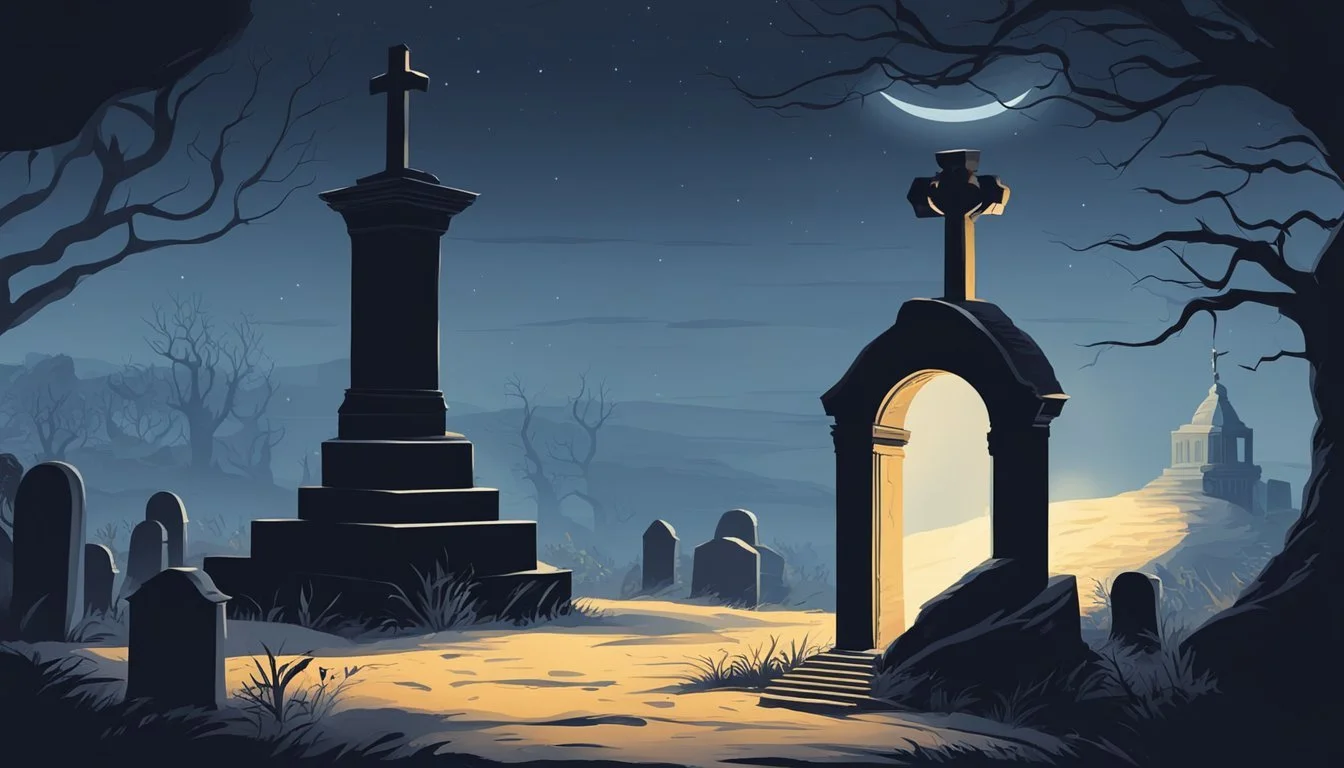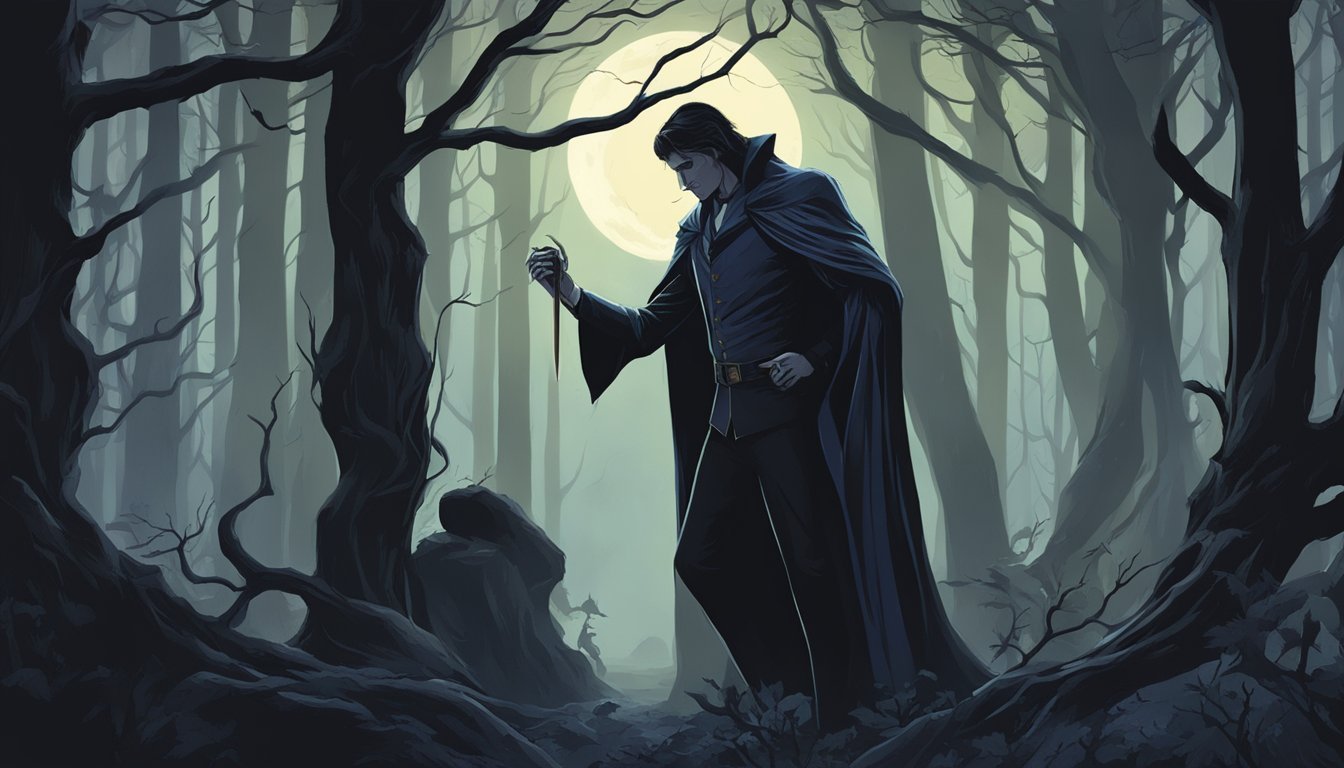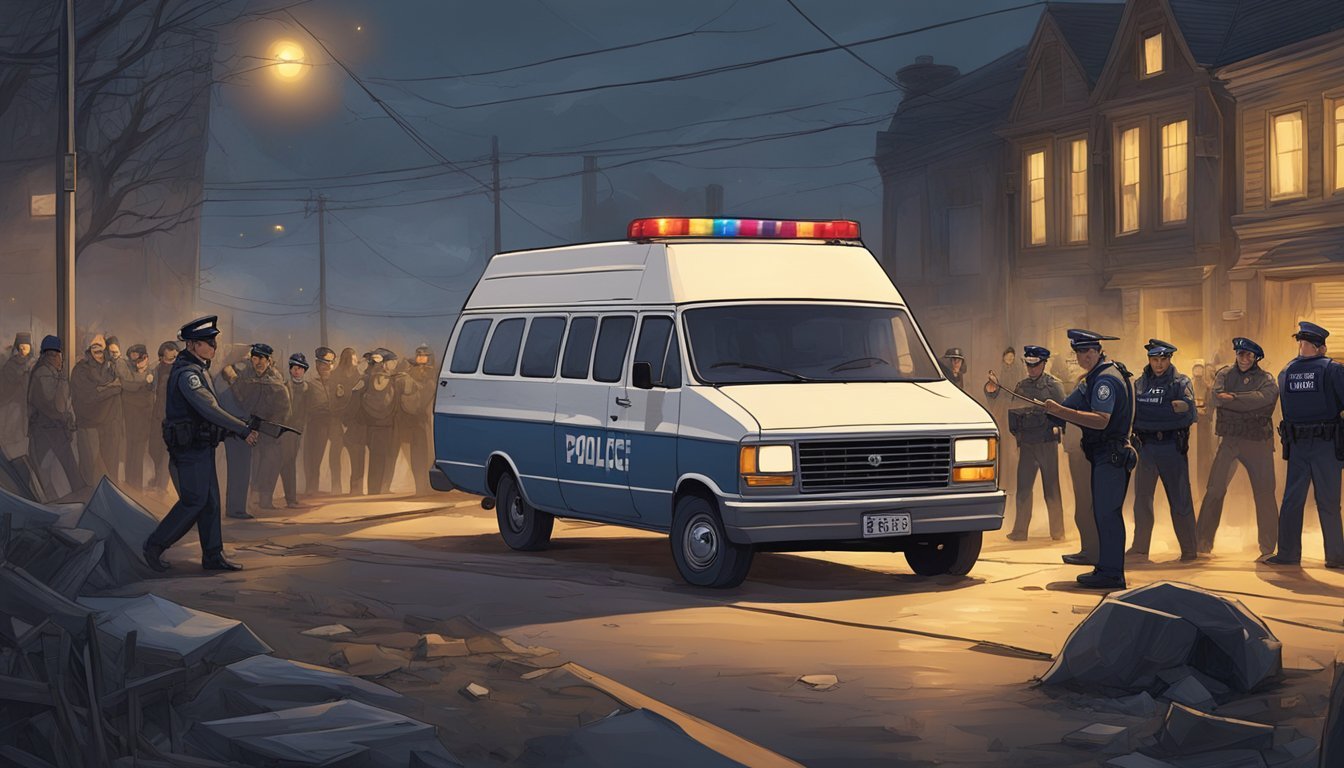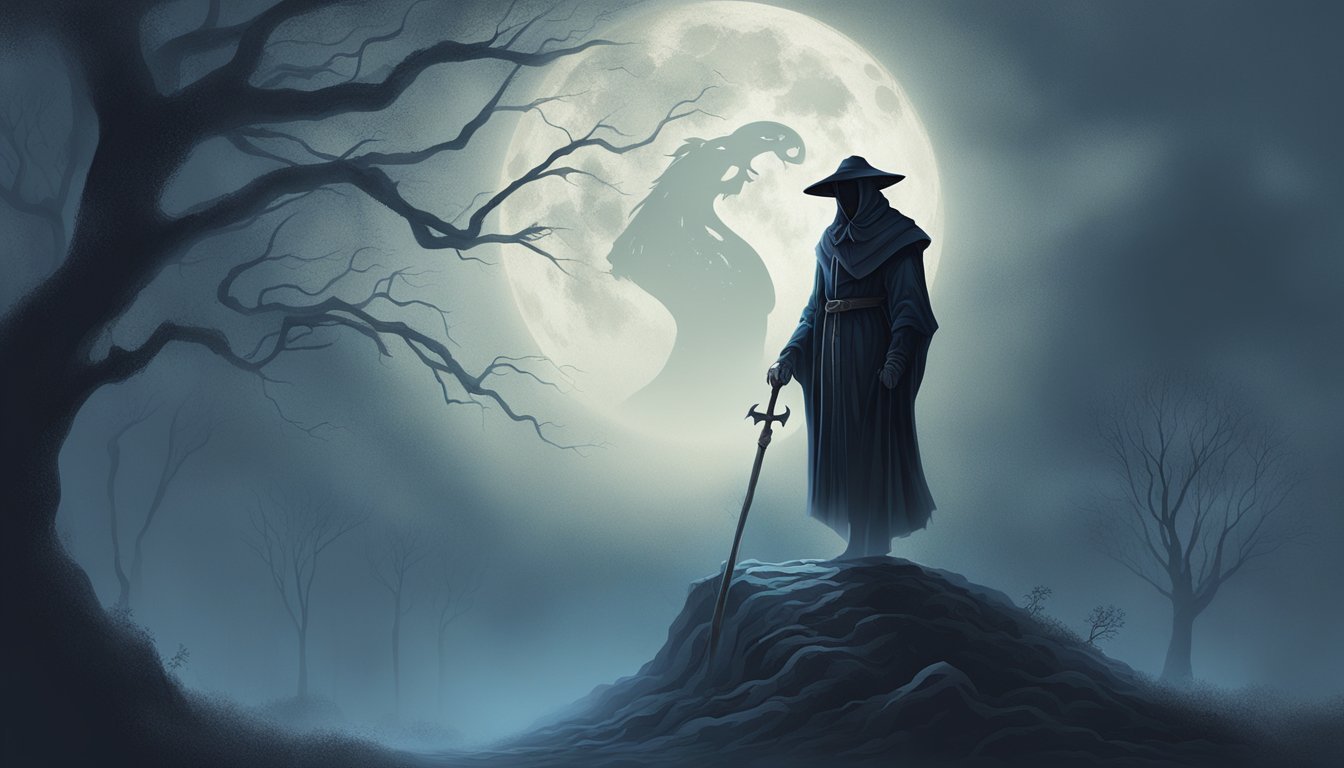Richard Chase's Vampire Vanquishment: Suicide of the Sacramento Killer
A Dark Chapter Ends
Richard Trenton Chase terrorized Sacramento, California in the late 1970s, earning the sinister moniker "The Vampire Killer." His brutal spree of murders shocked the community and left a lasting impact on true crime history.
Chase's disturbing crimes involved not only killing but also drinking his victims' blood and engaging in cannibalism. Between December 1977 and January 1978, he murdered six people, including a young child, before law enforcement finally apprehended him.
Convicted and sentenced to death, Chase's story took a final dark turn. Rather than face execution, he chose to end his own life through an overdose of prescribed antidepressants while on death row. This act of suicide brought a close to the case of the Sacramento Vampire Killer, leaving many questions unanswered about the mind of this notorious criminal.
Profile of Richard Chase
Richard Chase's disturbing journey from troubled youth to notorious killer was marked by severe mental illness and escalating violent behavior. His case highlights the devastating consequences of untreated psychological disorders.
Early Life and Mental Health Struggles
Born in 1950, Richard Chase exhibited signs of mental instability from a young age. He developed hypochondria as a child, constantly fearing for his health. In his teens, Chase began abusing alcohol and drugs, exacerbating his psychological issues. His behavior became increasingly erratic, with reports of him setting fires and torturing animals.
Chase's mental health deteriorated rapidly in early adulthood. He was diagnosed with paranoid schizophrenia and hospitalized multiple times. Despite treatment attempts, his condition worsened. Chase developed bizarre delusions, believing his blood was turning to powder and that he needed to consume blood to survive.
Descent into Violence
Chase's delusions fueled a disturbing fascination with blood. He began killing and mutilating animals, drinking their blood in a misguided attempt to "heal" himself. His behavior escalated to breaking into homes to steal and consume raw meat.
In 1977, Chase was briefly institutionalized after injecting rabbit blood into his veins. Upon release, he purchased several firearms. His violent tendencies intensified, culminating in a series of brutal murders in Sacramento between December 1977 and January 1978.
Chase killed six people, including a pregnant woman and a child. His crimes were marked by extreme violence and blood drinking, earning him the moniker "The Vampire of Sacramento."
Arrest and Psychological Evaluation
Police arrested Chase on January 27, 1978. Searches of his apartment revealed gruesome evidence, including body parts and blood-stained items. Psychological evaluations confirmed his paranoid schizophrenia diagnosis.
Experts deemed Chase legally sane during his trial, despite his severe mental illness. They noted his awareness of right and wrong, evidenced by his attempts to avoid capture. Chase's defense team argued for an insanity plea, but the jury found him guilty on all charges.
The trial exposed the full extent of Chase's delusions and the failure of the mental health system to adequately address his condition before it led to tragedy.
The Murder Spree
Richard Chase's killing spree in Sacramento lasted just over a month, claiming six lives. His brutal attacks shocked the community and earned him the nickname "The Vampire of Sacramento" due to his disturbing habit of drinking his victims' blood.
Timeline of the Killings
Chase's murder spree began on December 29, 1977, with the shooting of Ambrose Griffin. The 51-year-old engineer was killed in a drive-by shooting while helping his wife unload groceries.
On January 23, 1978, Chase struck again, murdering Teresa Wallin in her home. The pregnant 22-year-old was shot three times and mutilated post-mortem.
The spree culminated on January 27, 1978, with Chase's most horrific attack. He killed four people in one day: Evelyn Miroth, her 6-year-old son Jason, her friend Danny Meredith, and Miroth's 22-month-old nephew David Ferreira.
Notable Victims
Evelyn Miroth, 38, was shot, mutilated, and had blood drained from her body. Her son Jason was also killed and mutilated.
Danny Meredith, 51, was shot when he attempted to intervene during the attack on Miroth and her family.
Teresa Wallin's husband, David Wallin, discovered his wife's body upon returning home from work. The scene was described as particularly gruesome.
Investigation and Forensics
The Sacramento Police Department launched an intensive investigation following the January 27 murders. Fingerprints found at the crime scene were crucial in identifying Chase as the perpetrator.
Ballistics evidence linked the murders to a .22 caliber semiautomatic pistol. This weapon was later found in Chase's possession when he was arrested on January 27, 1978.
Forensic analysis of the crime scenes revealed Chase's habit of drinking his victims' blood and engaging in necrophilic acts. These findings contributed to his "Vampire Killer" moniker and played a significant role in his eventual conviction.
The Vampire Motif
Richard Chase's crimes earned him the nickname "Vampire of Sacramento" due to his blood-drinking and cannibalistic acts. His behaviors evoked vampire imagery in the public imagination, linking his real-life atrocities to fictional horror stories.
Blood Obsession and Cannibalism
Chase's obsession with blood drove his violent acts. He drank his victims' blood and consumed parts of their bodies. This macabre behavior stemmed from his delusional belief that he needed to ingest blood to survive.
Chase mutilated corpses, removing organs and body parts. He engaged in necrophilia with his victims' remains. These actions went beyond typical serial killer behavior, reinforcing his vampire-like image.
His crimes included:
Drinking blood from victims
Eating organs and flesh
Bathing in blood
Symbolism and Public Perception
The media dubbed Chase the "Vampire of Sacramento," capitalizing on the vampire symbolism. This nickname tapped into deep-seated cultural fears and fascination with mythical bloodsuckers.
The vampire motif shaped public perception of Chase's crimes. It positioned him as an inhuman monster, distancing him from society. This framing:
Intensified public fear
Simplified complex mental health issues
Linked real crimes to folklore
Chase's actions echoed elements of vampire lore, like Dracula. His blood drinking and nocturnal attacks reinforced this connection. The vampire label stuck, overshadowing other aspects of his case.
Law Enforcement and Legal Proceedings
Richard Chase's reign of terror in Sacramento came to an end in 1978 through swift police action. His capture led to a high-profile trial that captivated the public and resulted in a definitive legal outcome.
Capture and Arrest
On January 27, 1978, police received a call about a suspicious man in East Sacramento. Officers quickly responded and apprehended Richard Chase near the scene of his final murder. Chase had blood on his person and was carrying a bloodstained .22 caliber pistol.
A search of Chase's apartment yielded gruesome evidence. Police discovered blood-soaked clothing, body parts in the refrigerator, and containers filled with human blood. The FBI became involved in processing the crime scenes.
Chase initially denied involvement but later confessed to six murders. He claimed he needed to drink blood due to a poisoning plot against him.
Trial and Conviction
Chase's trial began on January 2, 1979, in Sacramento County Superior Court. He faced six counts of first-degree murder. The prosecution presented overwhelming physical evidence and Chase's own confessions.
Chase's defense team attempted to plead not guilty by reason of insanity. They argued his actions were driven by severe mental illness and delusions about needing blood. However, the jury rejected this defense after deliberating for five hours.
On May 8, 1979, the jury found Chase guilty on all six counts of first-degree murder. He was sentenced to death in the gas chamber at San Quentin State Prison. Chase's conviction marked the end of his brief but brutal spree as the "Vampire of Sacramento."
The Psychological Perspective
Richard Chase's psychological profile reveals a complex interplay of severe mental illness and disturbing behavioral patterns. His case exemplifies the devastating impact of untreated psychiatric conditions and their potential links to violent behavior.
Chase's Mental State
Chase suffered from paranoid schizophrenia, a severe mental disorder characterized by delusions and hallucinations. His condition manifested in bizarre beliefs about his blood turning to powder and needing to consume blood to survive.
These delusions drove his violent actions. Chase's schizophrenia went largely untreated, exacerbating his symptoms and erratic behavior.
Drug abuse, particularly LSD use, likely worsened his mental state. Chase's impotence also fed into his delusions about needing blood.
The Macdonald Triad
Chase exhibited traits associated with the Macdonald triad, a set of behavioral characteristics linked to violent tendencies:
Animal cruelty: Chase killed and consumed animals before targeting humans.
Fire-setting: Evidence suggests Chase engaged in arson as a youth.
Bed-wetting: Chase reportedly struggled with enuresis into adulthood.
While not definitively predictive, the presence of these traits in Chase's history aligns with patterns observed in other violent offenders.
His case underscores the importance of early intervention and treatment for mental health issues and concerning behavioral patterns.
Cultural Impact and Legacy
Richard Chase's crimes shocked Sacramento and left a lasting mark on true crime history. His disturbing actions and nickname "The Vampire of Sacramento" captured public attention and influenced media portrayals of serial killers.
Media Representation
Chase's case inspired several books and documentaries. The 1987 film "Rampage" loosely based its plot on Chase's crimes. True crime author Robert Ressler detailed Chase's case in his book "Whoever Fights Monsters."
Television shows like "Criminal Minds" and "CSI" referenced Chase's murders in episodes about vampiric killers. His story featured in multiple true crime podcasts and YouTube videos, introducing new audiences to the case decades later.
Comparison to Other Killers
Chase's blood-drinking and cannibalism set him apart from other serial killers of the era. His extreme mental illness and bizarre delusions contrasted with more calculated killers like the Hillside Stranglers.
Law enforcement used Chase's case to develop FBI profiling techniques for disorganized killers. His crimes highlighted gaps in mental health treatment and influenced debates on insanity defenses.
Chase's short but brutal killing spree became a notorious chapter in California crime history. His actions continue to fascinate and disturb true crime enthusiasts today.
The Final Act: Chase's Suicide
Richard Chase's life of crime ended abruptly in prison. His death marked the conclusion of a disturbing chapter in criminal history.
Events Leading to the Suicide
Chase was sentenced to death for his murders in 1979. He was placed in solitary confinement at San Quentin State Prison due to his erratic behavior. Chase's mental state deteriorated further in custody.
He repeatedly told prison psychiatrists that he feared Nazi sympathizers were plotting to kill him in the gas chamber. Chase claimed they wanted to turn his blood into powder through poison.
On December 26, 1980, guards found Chase unresponsive in his cell. He had hoarded his antidepressant medications and taken a fatal overdose.
Responses and Aftermath
Chase's suicide elicited mixed reactions. Some victims' families expressed relief, while others felt cheated out of justice. Legal experts debated whether the prison system had failed to prevent his death.
The incident sparked discussions about mental health care in prisons. Critics argued that Chase's deterioration should have been addressed more effectively.
Chase's death also reignited interest in his case. True crime enthusiasts and researchers continue to study his crimes and psychology. His autopsy revealed severe brain damage, fueling further speculation about the roots of his violent behavior.








